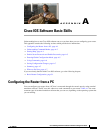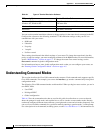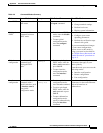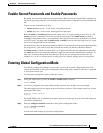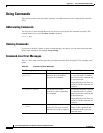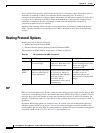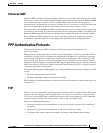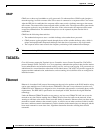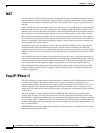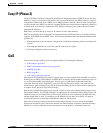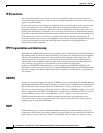
B-1
Cisco 860 Series, Cisco 880 Series, and Cisco 890 Series Integrated Services Routers Software Configuration Guide
OL-18906-02
APPENDIX
B
Concepts
This appendix contains conceptual information that may be useful to Internet service providers or
network administrators when they configure Cisco routers.
The following topics are included in this appendix:
• Network Protocols, page B-1
• Routing Protocol Options, page B-2
• PPP Authentication Protocols, page B-3
• TACACS+, page B-4
• Ethernet, page B-4
• Dial Backup, page B-5
• NAT, page B-6
• Easy IP (Phase 1), page B-6
• Easy IP (Phase 2), page B-7
• QoS, page B-7
• Access Lists, page B-9
Network Protocols
Network protocols enable the network to pass data from its source to a specific destination over LAN or
WAN links. Routing address tables are included in the network protocols to provide the best path for
moving the data through the network.
IP
The best-known Transmission Control Protocol/Internet Protocol (TCP/IP) at the internetwork layer is
IP, which provides the basic packet delivery service for all TCP/IP networks. In addition to the physical
node addresses, the IP protocol implements a system of logical host addresses called IP addresses. The
IP addresses are used by the internetwork and higher layers to identify devices and to perform
internetwork routing. The Address Resolution Protocol (ARP) enables IP to identify the physical address
that matches a given IP address.
IP is used by all protocols in the layers above and below it to deliver data, which means that all TCP/IP
data flows through IP when it is sent and received regardless of its final destination.



